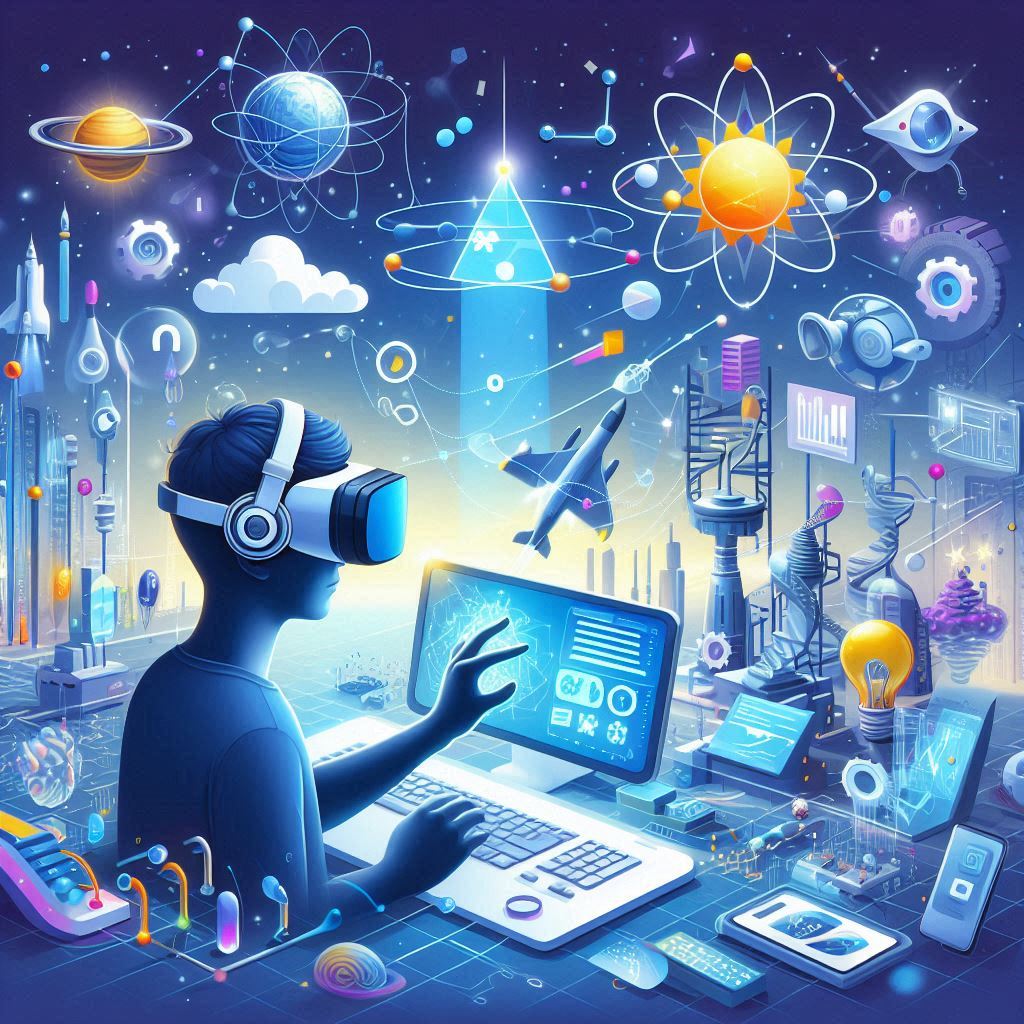Revolutionizing the Digital Landscape with AR and VR Advancements
 Yoshi Sharma
Yoshi Sharma
The realms of Augmented Reality (AR) and Virtual Reality (VR) are no longer confined to the fringes of technology—they are rapidly becoming integral to various industries, reshaping how we interact with the digital world. From gaming and entertainment to education and healthcare, AR and VR are revolutionizing experiences and creating new opportunities.
The Evolution of AR and VR
Augmented Reality (AR) overlays digital information onto the real world, enhancing our perception and interaction with our surroundings. Think of Pokémon GO, where players see virtual creatures in real-world locations through their smartphone cameras. Virtual Reality (VR), on the other hand, immerses users in a completely digital environment, typically through headsets like the Oculus Rift or HTC Vive, providing an experience that feels lifelike.
Both technologies have made significant strides over the past decade. Improvements in hardware, such as lighter and more comfortable headsets, and advancements in software, with more sophisticated graphics and interactive capabilities, have pushed AR and VR into mainstream adoption.
Innovations in AR and VR
Gaming and Entertainment:
Immersive Experiences: Games like Beat Saber and Half-Life: Alyx demonstrate the immersive potential of VR, creating environments where players can physically move and interact with the game world.
AR in Mobile Games: Titles like Pokémon GO and Harry Potter: Wizards Unite have shown how AR can blend digital content with real-world environments, creating engaging and interactive experiences.
Education and Training:
Simulated Training Environments: VR is being used to train professionals in high-stakes fields such as medicine and aviation. Surgeons can practice complex procedures in a risk-free virtual environment, while pilots can experience realistic flight simulations.
Interactive Learning: AR applications like Google Expeditions allow students to explore historical sites or the human body in 3D, providing an interactive and engaging way to learn.
Healthcare:
Therapeutic Uses: VR is being utilized in therapy for conditions like PTSD and anxiety, providing controlled environments where patients can confront and manage their symptoms.
Augmented Surgery: AR can assist surgeons by overlaying important information, such as patient vitals and surgical guidelines, directly onto their field of view, enhancing precision and efficiency.
Retail and E-commerce:
Virtual Try-Ons: AR enables customers to try on clothes, accessories, or even makeup virtually, providing a convenient shopping experience and reducing return rates.
Virtual Showrooms: VR can create virtual showrooms where customers can explore and interact with products in a 3D space, offering a more engaging way to shop online.
Architecture and Real Estate:
Virtual Tours: VR allows potential buyers to take virtual tours of properties from the comfort of their own homes, making the home-buying process more convenient.
Augmented Design: Architects and designers can use AR to visualize how their projects will look in real-world settings, helping them make more informed design decisions.
Challenges and the Future
Despite the impressive advancements, AR and VR still face several challenges. High costs, especially for VR headsets, can be a barrier to widespread adoption. Additionally, issues like motion sickness in VR and the need for more realistic and interactive content remain areas for improvement.
Looking ahead, the future of AR and VR is promising. As technology continues to evolve, we can expect more affordable and sophisticated devices, greater integration with other technologies like AI and 5G, and an expanding range of applications across various sectors. The line between the digital and physical worlds will continue to blur, opening up new possibilities for how we live, work, and play.
Conclusion
AR and VR are at the forefront of technological innovation, offering transformative experiences that were once the stuff of science fiction. As these technologies continue to advance, they will undoubtedly play a crucial role in shaping the future, creating a world where digital and physical realities seamlessly intertwine. Whether it's through immersive gaming, enhanced learning, or improved healthcare, AR and VR are set to redefine our interaction with the world around us.
Message from the author:-
Hello friends!!!! Hope you like reading the above article on how AR and VR revolutionize the digital landscape. Hope you found it informative and learnt many things from the article. Happy Reading!!
Don't forget to like, comment and subscribe to my newsletter for more such updates.
Also read:-"Coding is not a skill, it's the way of thinking "
"Exploring the Python Language: A High-Level, Versatile Programming Tool"
Subscribe to my newsletter
Read articles from Yoshi Sharma directly inside your inbox. Subscribe to the newsletter, and don't miss out.
Written by
